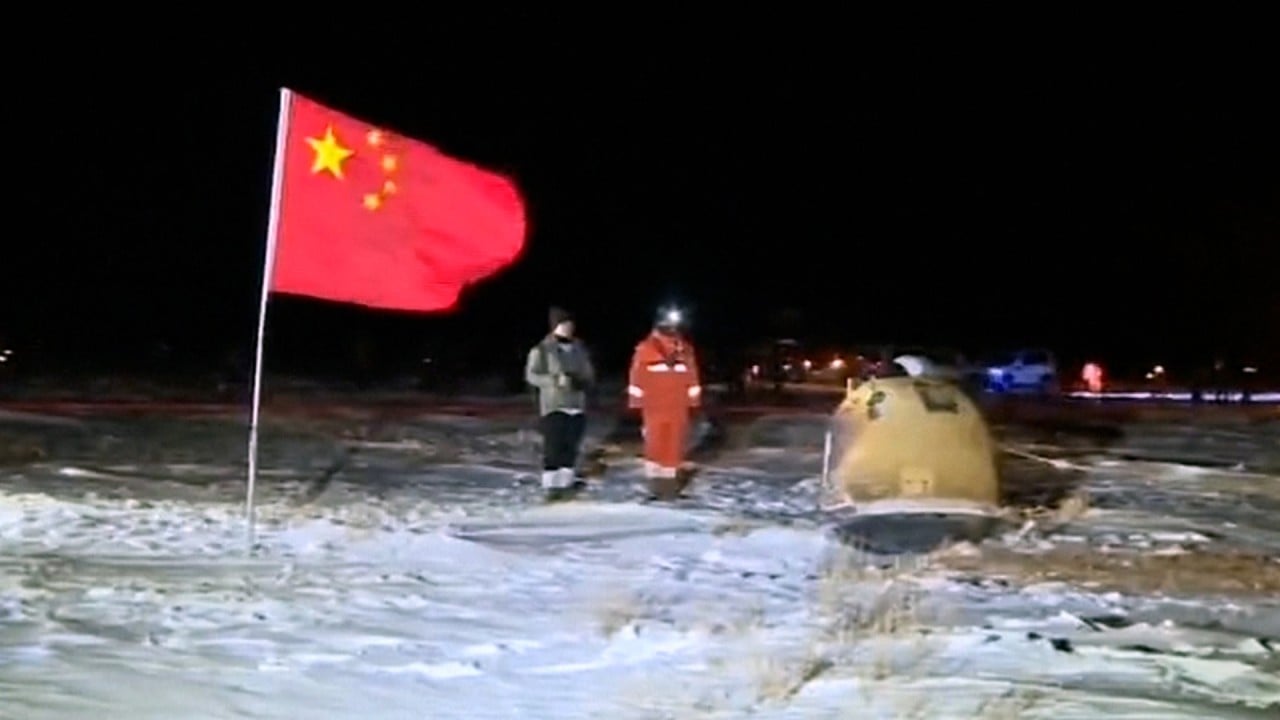
Chinese, French scientists to work together on lunar rock samples
- It will include joint programmes and exchanges between the Chinese Academy of Sciences and French space and science agencies
- The soil and rocks brought back from the moon by the Chang’e 5 in December are the first collected in more than four decades
Zhou Qi, deputy head of the Chinese Academy of Sciences (CAS), on Tuesday said China and France would work together on the lunar samples based on their “long-term friendly cooperation” in the space field.
It will include joint programmes and exchanges between the CAS and the French space agency, the Centre National d’Etudes Spatiales, as well as its Centre National de la Recherche Scientifique.
But Zhou did not say whether lunar samples would be given to the French scientists.

As of July, the China National Space Administration (CNSA) said it had distributed about 1 per cent of the samples collected to 13 Chinese research institutions, including the CAS, for analysis.
The CNSA has said it would share some of the samples with the global scientific community, give some as gifts to countries and organisations, and put some on public display, but most will go to Chinese research bodies.
While lunar samples are likely to be shared with scientists from Europe and Russia – China and Russia have agreed to build a joint research base on the moon – it is not clear if the US will be included. Nasa had asked to share the lunar samples brought back by China’s Chang’e 5 probe, but under US law congressional approval would be needed. China has not signed the US-led Artemis Accords, an international pact on lunar exploration.

01:28
China’s Chang’e 5 lunar mission returns to Earth with moon samples
Last year’s lunar mission brought back 1.7kg (3.74lbs) of rocks and dust from Oceanus Procellarum, or the Ocean of Storms, which was formed from solidified lava after an ancient volcanic eruption.
Their analysis concluded that the rocks had been formed from magma from a volcanic eruption about 2 billion years ago – around a billion years later than the formation of the moon rocks that have previously been analysed.
The results confirmed what experts had long predicted based on remotely obtained images of the moon and showed that it was volcanically active later than expected.
The findings were published in the journal Science on October 8 by a team of 25 researchers from Australia, Britain, China, Sweden and the US.
On Tuesday, Zhou said the CAS was “actively promoting” international cooperation on lunar sample research.

